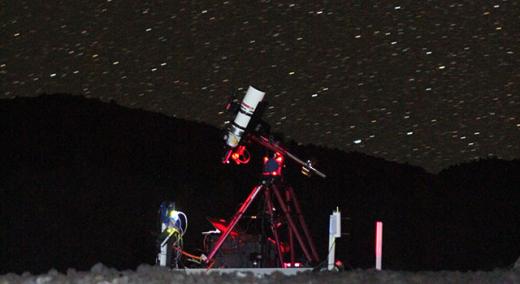NIST lunar telescope on Mauna Loa volcano, part of NIST’s first measurements of the lunar irradiance from this site. Credit: J. Woodward/NIST
One of the unexpected rewards of working at NIST has been the opportunity to see other disciplines through the NIST prism of measurement science and standards. By working with NASA scientists, astronomers, oceanographers and geologists, I’ve had the opportunity to witness the lives of scientists in a variety of fields.
|
ADVERTISEMENT |
Often, my way of interacting with these researchers is by calibrating the sensors on their instruments. These calibrations help ensure that the instruments accurately measure the light and other electromagnetic radiation from objects the scientists are studying, whether it is the Pacific Ocean, a forest fire, or a faraway galaxy. To calibrate these researchers’ sensors properly, we need reliable ways to measure light itself. My NIST colleagues and I are currently engaged in some cutting-edge efforts to make these measurements better than they’ve ever been. But before I tell you about the high-altitude NASA aircraft we use, and the lunar observatory we’re building, let’s talk about the earliest standard for measuring light output: the humble candle.
…

Comments
Learn something every day...
I had no idea how Candlepower came about or what has been done since. I wonder what was used as the 'comparator' to compare a standard candle to a candle some bloke just carried in and wanted calibrated?
Add new comment